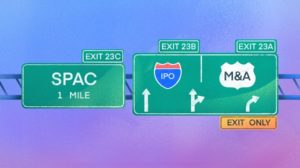Morning Markets: Ahoy, SaaS IPO, how do you do?
Late last week, PagerDuty filed to go public. The company’s now-public S-1 filing is a somewhat normal SaaS document. So, let’s get the big numbers under our belts this morning. We’ll explore more when the company gets closer to pricing.
PagerDuty sells a service that alerts developers when things break, sold on a recurring basis, backed by a host of venture capitalists. The firm raised over $170 million during its life. The San Francisco-based company founded in 2009 most recently raised a $90 million Series D in September 2018, valuing it near $1.3 billion according to Crunchbase data.
Today, let’s explore the firm’s revenue, revenue growth, and margins. Then we’ll peek at its SaaS-style metrics that are, as you’ll see, interesting in how they come together.
The Big Numbers
PagerDuty’s S-1 is set up in such a way that the most useful figures given compare the first nine months of 2017 and 2018. The fourth quarter of 2018 will, I presume, be filled in soon in an updated S-1 filing (an S-1/A for the curious).
As that has yet to happen, we are stuck with the first three quarters of 2018 and the same period of the preceding year. So, how did the company do? Here’s your Morning Markets digest:
- PagerDuty’s revenue grew from $56.6 million in revenue during the first three quarters of 2017, to $84.0 million in the same period of 2018. Those figures represent growth of 48.4 percent. We’ll compare that growth rate later to how much money PagerDuty loses to get a feel for whether it is fast, or slow.
- In the first nine months of 2017, PagerDuty had gross margins of around 84 percent. In the same period of 2018 that figure rose to around 85 percent. Those are very strong margins.
- PagerDuty spends more money than it generates in gross profit, so it loses money. (For notes on how to read along, head here). The firm’s operating costs of $107.5 million during the first three quarters of 2018 were $35.9 million greater than its gross profit during the period of $71.6 million.
- The company’s net loss came to $29.8 million in the first nine months of 2017, rising to $34.5 million during the same period last year.
- PagerDuty lost more money in the first three quarters of 2018 than it did in the first three quarters of 2017, but the firm’s net margins improved to -41.1 percent from -52.7 percent in the preceding year. That’s what you want to see: improving margins during periods of growth.
- However, like a lot of SaaS companies, the firm’s improving margins mask rising dollar-denominated losses. So, yes, PagerDuty is losing less money as a percent of its revenue over time, but the total amount of loss still rose last year.
- The firm had $128.3 million in cash and equivalents in at the end of the third quarter of 2018. That’s a lot of cash, it turns out, as PagerDuty burned just $10 million (give or take) in the first nine months of 2018 in both operating and investing activities. That’s just not that much compared to its cash position, and implies that the firm has plenty of duckets on deck to keep funding its own growth for a while yet. And, when it picks up a nice IPO payout, the firm will have even more cash to use to build itself.
PagerDuty is a pretty good company, I’d reckon. If you run a strict Rule of 40 calculation, comparing net losses to revenue growth, the firm falls short. But if you look at its cash consumption (a very SaaS-y idea) instead, the firm is much closer to kosher.
And with its hyper-minimal cash burn, it seems to be a healthy shop.
How Does That Work?
But its health doesn’t mean that there aren’t some mysteries. I don’t quite understand how the following metrics line up:
- Revenue growth of 48.4 percent in the most recent periods reported;
- “Dollar-based Net Retention Rate” of between 135 and 140 over the past few years;
- $47.4 million in sales and marketing costs during the first nine months of 2018.
Translating our little puzzle into English, here’s what I’m asking: If the company’s extant customer base tends to spend 35 to 40 more apiece, on average, year-over-year, how did the company spend about four dozen million in nine months picking up the rest of its growth? It looks like a high price to pay for a fraction of its aggregate revenue growth.
Perhaps this is just how much it costs to sell SaaS product in the modern era. But it seems that the company’s growth is heavily weighted toward watching existing customers buy more seats and the like than new accounts. But, the firm is still spending heavily on acquiring new customers.
That or we are misreading how the company calculates its net retention rate. Here’s the language:
We calculate dollar-based net retention rate as of a period end by starting with the ARR from the cohort of all customers as of 12 months prior to such period end, or Prior Period ARR. We then calculate the ARR from these same customers as of the current period end, or Current Period ARR. Current Period ARR includes any expansion and is net of contraction or attrition over the last 12 months but excludes ARR from new customers in the current period. We then divide the total Current Period ARR by the total Prior Period ARR to arrive at the dollar-based net retention rate.
It seems from that paragraph that PagerDuty is not deleting lost customers from its calculations, juicing its resulting net retention rate. Update: Martin from the excellent Crunchbase product team (I’m biased) read this after publication and pointed out that it does seem that PagerDuty is cutting lost customers from its figures in the above. Specifically, he highlighted the “is net of contraction or attrition” bit. I had been caught up on the citation of “same” customers. Regardless, with his notes in mind, the math makes more sense. PagerDuty is simply amazing business once it lands a customer (new accounts will grow in spend over time, an excellent result for a high-margin company). And that reason may be why the firm spends as much as it does to acquire new accounts.
But it still feels high.
Who Gets Paid
The math is over, I promise. Now let’s examine who is going to get paid when the company goes public. Recall that the firm had picked up over $170 million during its life as a private company:

A16z, Accel, Bessemer, and Baseline all did very well. CEO Jennifer Tajada also owns a big chunk as well.
It’s unclear what the firm will be worth when it does debut, but it seems likely that its venture investors will do well on this particular deal. And that’s that. More when it prices!
Illustration: Li-Anne Dias.

Stay up to date with recent funding rounds, acquisitions, and more with the Crunchbase Daily.




![Illustration of a guy watering plants with a blocked hose - Global [Dom Guzman]](https://news.crunchbase.com/wp-content/uploads/quarterly-global-3-470x352.jpg)
![Illustration of a man sitting on a huge pile o' money. [Dom Guzman]](https://news.crunchbase.com/wp-content/uploads/Giant_Funding-470x352.jpg)

![Illustration of toast with $ toasted in. [Dom Guzman]](https://news.crunchbase.com/wp-content/uploads/Forecast-dollar-sign-300x168.jpg)



67.1K Followers